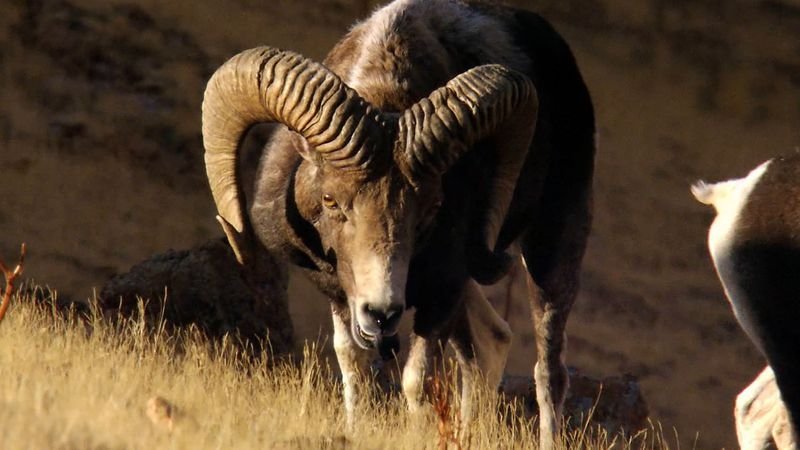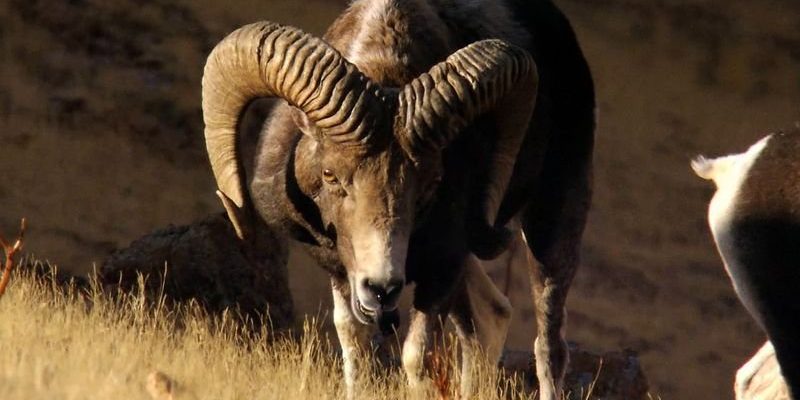
Now, you might wonder, how do Argali sheep manage to ensure the survival of their offspring in such a tough setting? It’s like watching a well-coordinated dance where every step counts. From finding the safest spots to giving their lambs the necessary skills to thrive, Argali sheep showcase remarkable parenting techniques. So, grab your favorite drink and let’s dive into the world of Argali parenting.
Where Do Argali Live?
Understanding how Argali raise their young starts with knowing where they live. These adaptable creatures inhabit the high-altitude steppes, mountains, and valleys of Central Asia, covering countries like Mongolia, Kazakhstan, and parts of Tibet. Imagine vast, open spaces with rocky outcrops and steep cliffs.
The rugged terrain is not just a backdrop; it plays a crucial role in their survival. The high altitudes provide natural protection from predators and harsh weather. Argali often choose locations near cliffs or rocky areas for giving birth, ensuring their lambs have the best chance of escaping threats. This choice is like setting up a fortress for their young, where they can grow safe and sound.
Breeding Season and Gestation
The breeding season for Argali usually occurs in the fall. Males show off their impressive horns and engage in sparring matches to win over females. It’s like a competition where only the strongest get the chance to mate. Once a female finds her mate, the gestation period lasts about six months. During this time, she begins to prepare for the arrival of her lamb.
You might be wondering what happens during this crucial period. The pregnant sheep become more cautious. They often separate from the larger herd to find a safe and quiet place to give birth. It’s almost like a secret mission—finding the ideal spot where no one can disturb them. This strategy not only helps ensure a safe delivery but also provides a peaceful environment for the newborn lambs.
Giving Birth: The First Moments
When the time comes, a female Argali usually gives birth to a single lamb, though twins are not unheard of. The process takes place in well-hidden areas, often among tall grasses or rocky ledges. As soon as the lamb arrives, it’s a race against time. Within just a few hours, the lamb needs to stand and nurse. This quick action is crucial for their survival, as they need the mother’s milk, packed with nutrients, to grow strong.
After birth, the mother remains attentive, staying close to her lamb. She uses her body to shield it from potential predators. The bond formed in these first moments is powerful. It’s a blend of instinct and necessity, as the mother knows that her lamb’s life depends on her protective instincts.
Lamb Development and Learning
As the lamb grows, the mother plays an essential role in its development. The first few weeks are vital. The mother leads her lamb to grazing areas rich in nutritious vegetation and teaches it how to navigate steep terrains. Think of it as a boot camp for survival—every day is a new lesson.
The lamb learns to recognize different plants, understand the best routes to take, and even how to respond to danger. Honestly, it’s like a mini adventure where the lamb is figuring out what it means to be an Argali. The mother’s guidance ensures that her young one is not just surviving, but thriving.
Social Structure and Protection
Life for Argali is not just about individual survival; it’s about community too. They live in groups, known as herds, which can range from a few individuals to around 100. This social structure offers additional protection to the young lambs. When a predator is spotted, the herd’s collective response provides an extra layer of safety.
Here’s the thing: a lone lamb is more vulnerable, but within a herd, there are many eyes watching out for danger. The adults also help the lambs learn social skills by teaching them the importance of teamwork and communication within the group. It’s remarkable how these interactions prepare the young for life beyond their immediate family—a true lesson in community living.
Challenges Faced by Argali Young
Despite their impressive parenting skills, Argali lambs face numerous challenges. Predators like wolves and snow leopards are always a threat. Additionally, environmental changes and human impact, such as hunting and habitat loss, put stress on their populations. When food sources dwindle or their habitats are disturbed, it can directly affect how well the young thrive.
Argali mothers must stay vigilant, adjusting their patterns to avoid areas where predators might lurk. It’s a constant balancing act between finding food and keeping their young safe. This struggle highlights the resilience of Argali sheep and the lengths they will go to ensure their lambs have a fighting chance.
Why Understanding Argali Parenting Matters
So, why should you care about how Argali raise their young? Well, it’s a window into the complexities of nature and wildlife. Every species has its unique strategies for survival, and studying these behaviors helps us understand the delicate balance of ecosystems. Moreover, with many species struggling against habitat loss and climate change, learning about Argali parenting can inform conservation efforts.
By understanding their needs and how they interact with their environment, we can better protect them and support their habitats. Advocating for wildlife conservation isn’t just about saving a species; it’s about sustaining our planet’s rich tapestry of life.
In conclusion, Argali sheep exhibit fascinating and effective strategies in raising their young, combining instinct, intelligence, and community support. By understanding their world, we gain insights not just into their lives but into the broader challenges facing all wildlife. Their parenting techniques remind us that survival is a team effort, and caring for the next generation is essential for the future of any species.

